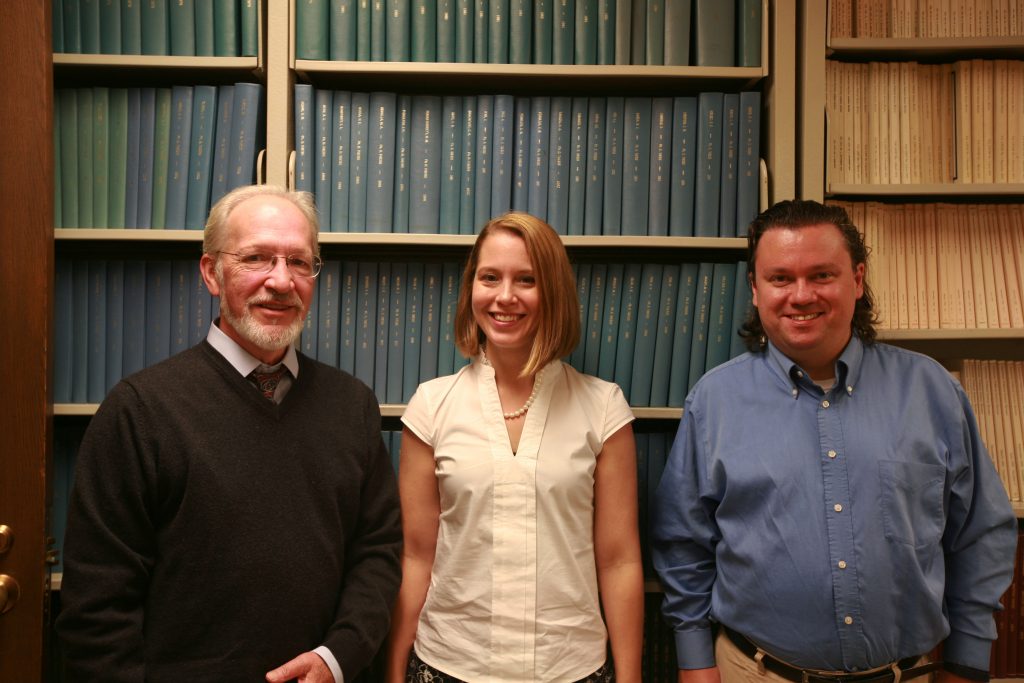
Research by a team of Binghamton University professors could be considered in a gerrymandering case currently being seen by Supreme Court.
The case, Gill v. Whitford, deals with possible partisan gerrymandering ― the manipulation of a district’s boundaries to give one party an advantage ― by Republican legislators in Wisconsin when drawing the state’s assembly districts in 2011.
According to Michael McDonald, a professor of political science at BU, the case stands out as the first time in 30 years that the potential to identify partisan gerrymandering has been so clear-cut.
“The Supreme Court gets 7,000 cases a year and they take 75,” McDonald said. “It’s a big deal.”
The lead plaintiff in the case is William Whitford, a University of Wisconsin Law School professor, who said he believes the 2011 map doesn’t correctly reflect the state’s voters.
In the 2012 Wisconsin state assembly elections, Democrats received 52 percent of the votes, but won just 38 percent of seats. In contrast, Republicans received 47 percent of votes, but won 62 percent of seats.
“All the data shows that gerrymandering is only getting worse, by both sides,” Whitford said in an interview with Salon. “It’s a problem, and a national one, of single-party control.”
If the Wisconsin maps are determined to have a clear partisan gerrymander, they’ll be the first of their kind. The Supreme Court has never before ruled district maps unconstitutional.
In 2004, another prominent case of partisan gerrymandering, Vieth v. Jubelirer of Pennsylvania, came before the Supreme Court. Eight justices were split on whether a proper standard to determine the existence of partisan gerrymandering existed. Justice Anthony Kennedy agreed that there was no judicial solution to the case, but noted the possibility of court intervention if a workable standard was agreed upon.
That’s where the research of BU professors comes in.
Political science professors Robin Best, Jonathan Krasno, Daniel Magleby and Michael McDonald, along with Shawn Donahue, a fourth-year Ph.D. candidate studying political science, filed one of 54 amicus curiae briefs submitted to the court. The brief describes their standard, that of equal vote weight, which says three specific conditions must be present to determine a case of partisan gerrymandering.
But their standard isn’t the one being used in the case. Instead, the efficiency gap, or the difference between each party’s wasted votes ― those that don’t contribute to a politician’s victory ― in an election divided by the number of votes cast, is being used by litigators.
Last November, a Wisconsin district court composed of three federal judges found the state’s districts to be gerrymandered and ordered them redrawn by the legislature. The ruling was the first in over three decades in which a redistricting plan was declared unconstitutional by a federal court. The judges held that Wisconsin’s maps disregarded Whitford’s First Amendment freedom of association (with the Democratic Party) and the Equal Protection Clause.
But in February, the state of Wisconsin appealed the ruling, requesting that the Supreme Court review the decision that the maps are unconstitutional.
Best and McDonald began working on the standard as an entry to a competition sponsored by Common Cause, a Washington, D.C.-based progressive organization with a stated goal of “restoring the core values of American democracy.”
Their winning submission, which detailed the equal vote weight standard’s conditions, gained the attention of lawyers involved in the Wisconsin case.
When the team members compared their standard with the efficiency gap, they said, the latter standard created a large number of false positives and negatives.
“[Using the efficiency gap] is like taking your blood pressure with a thermometer,” McDonald said.
According to McDonald, his team cautioned the plaintiff’s legal team against using the efficiency gap at the district court level.
“We started talking to the Wisconsin people and told them, ‘Don’t go with the efficiency gap; this is going to be a serious problem as this litigation proceeds,’“ McDonald said. “I think it’s fair to say that they ducked us or ignored us.”
Donahue said he believes the case would have taken a different course had their standard been used.
“I don’t think the court would have been able to attack it producing so many false negatives and positives [like the efficiency gap], because it wouldn’t,” he said.
To advance the argument for their standard, the professors used a computer program to generate thousands of alternative, partisan-blind districting plans in Wisconsin. Their brief included 10,000 such plans.
“We find that the Wisconsin case is quite an outlier compared to any of the partisan-blind plans,” McDonald said.
Oral arguments in the case began on Oct. 3; a ruling is expected by June 2018.


